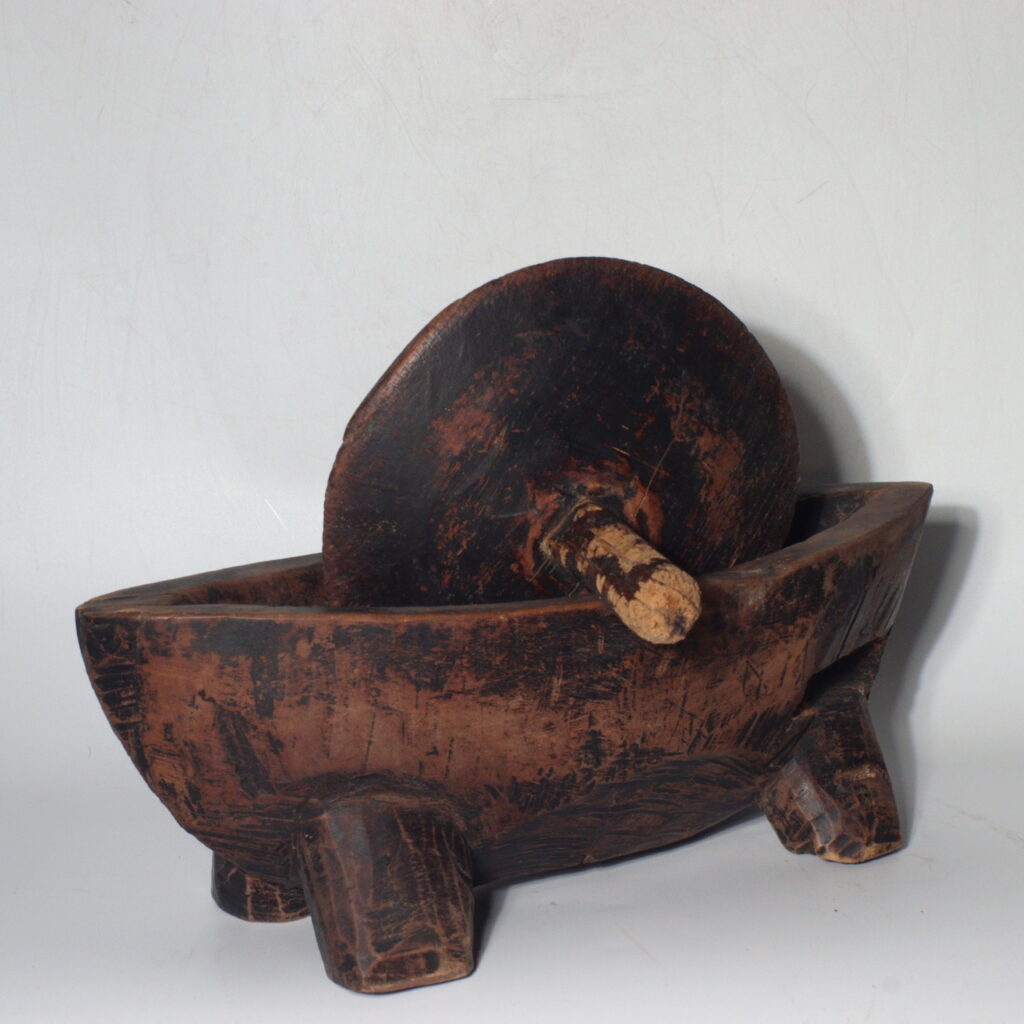
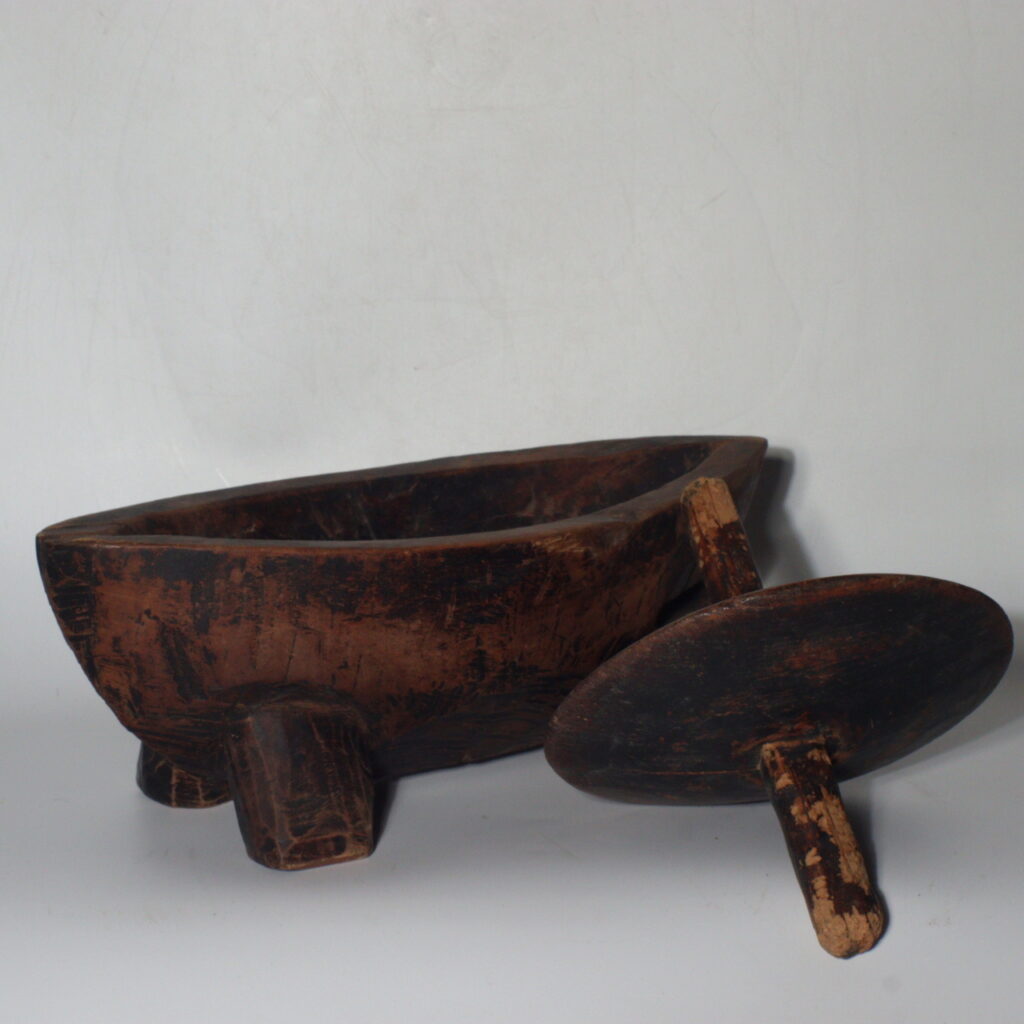
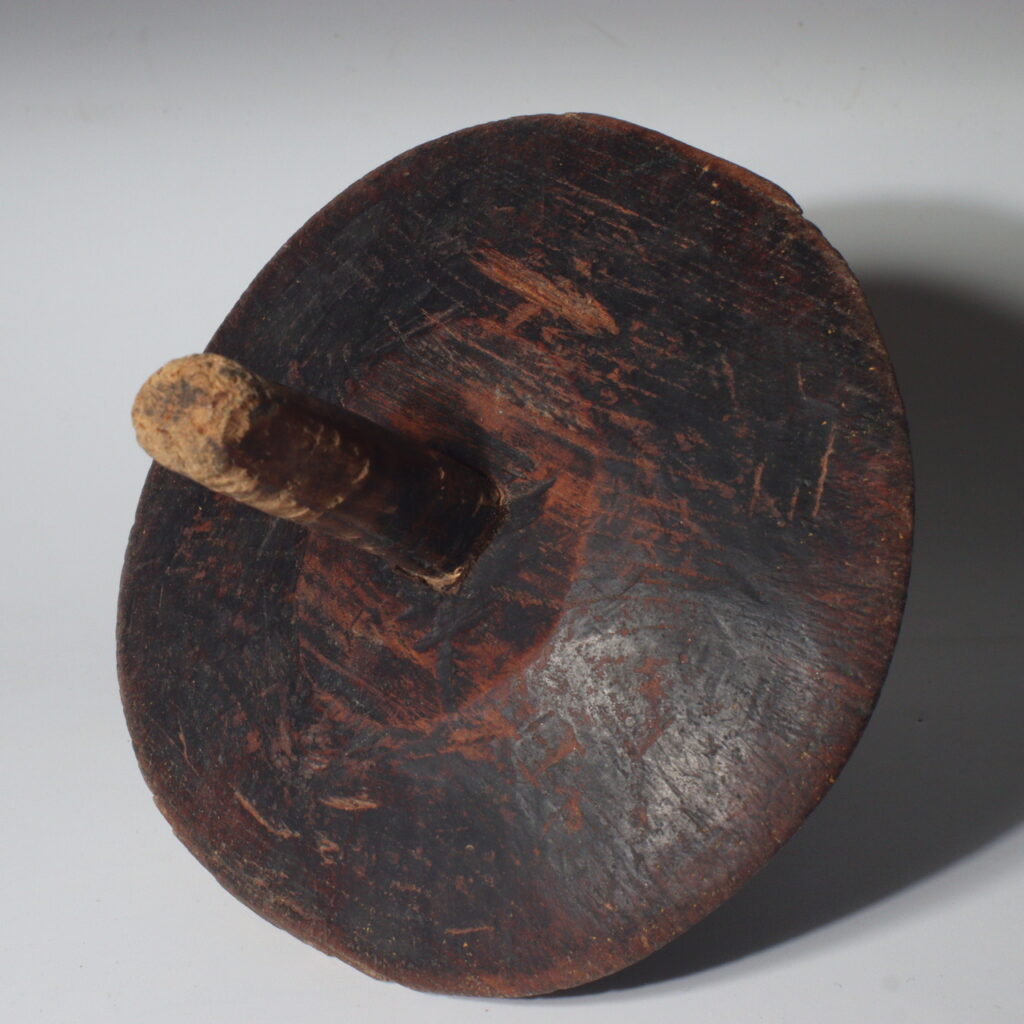
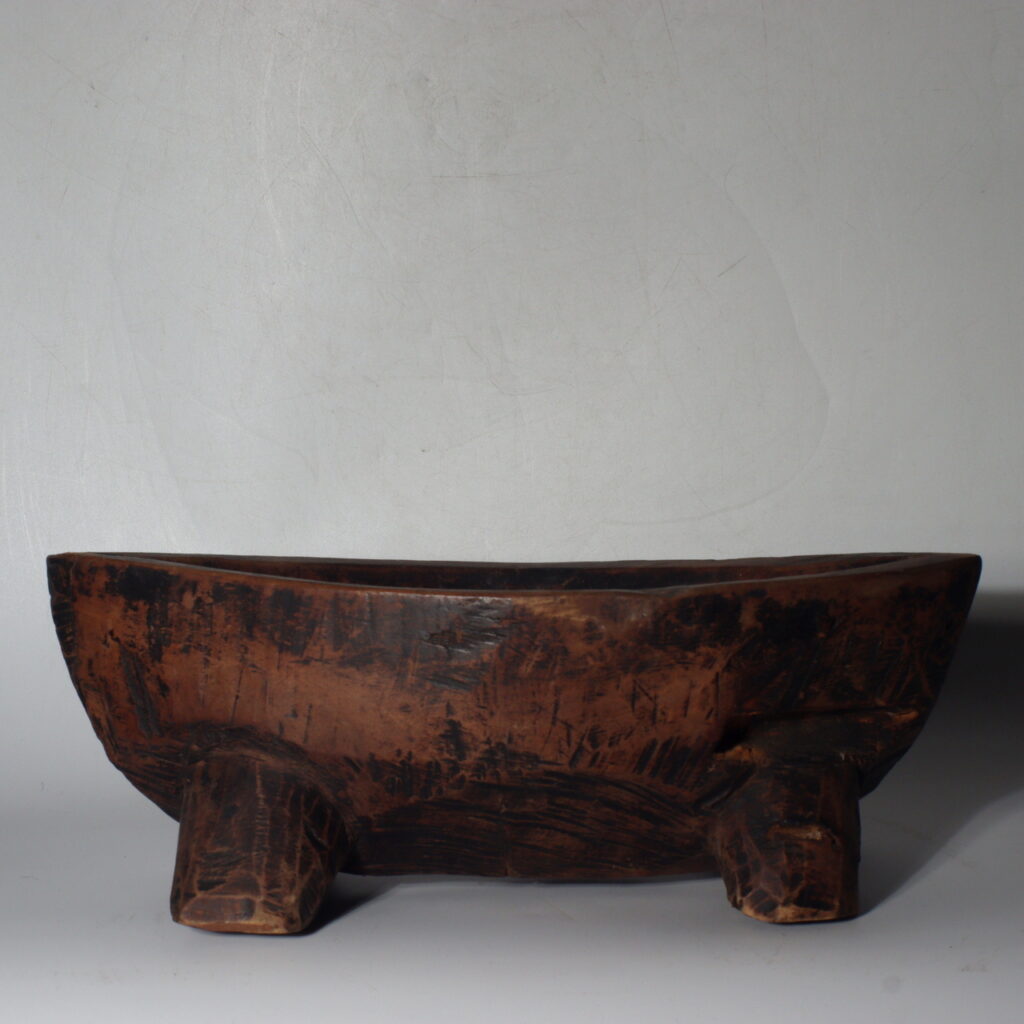
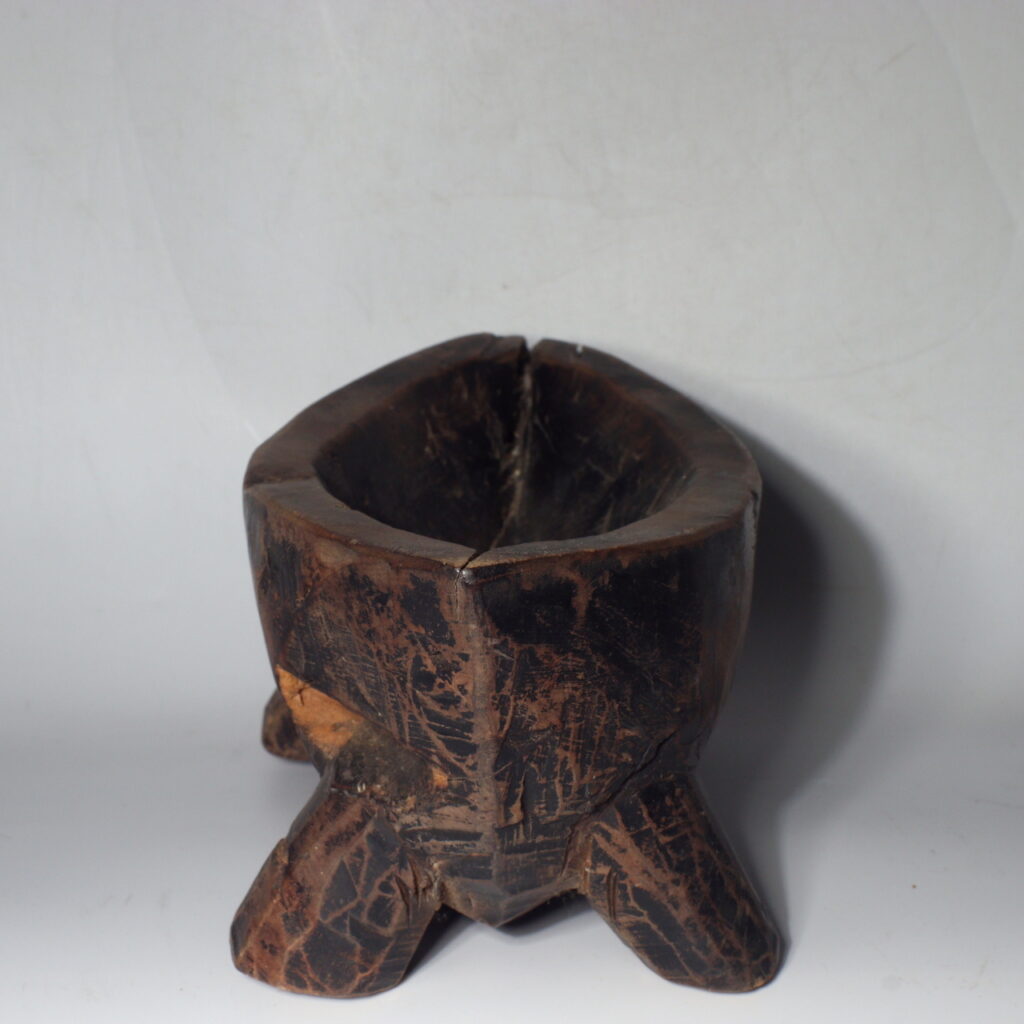
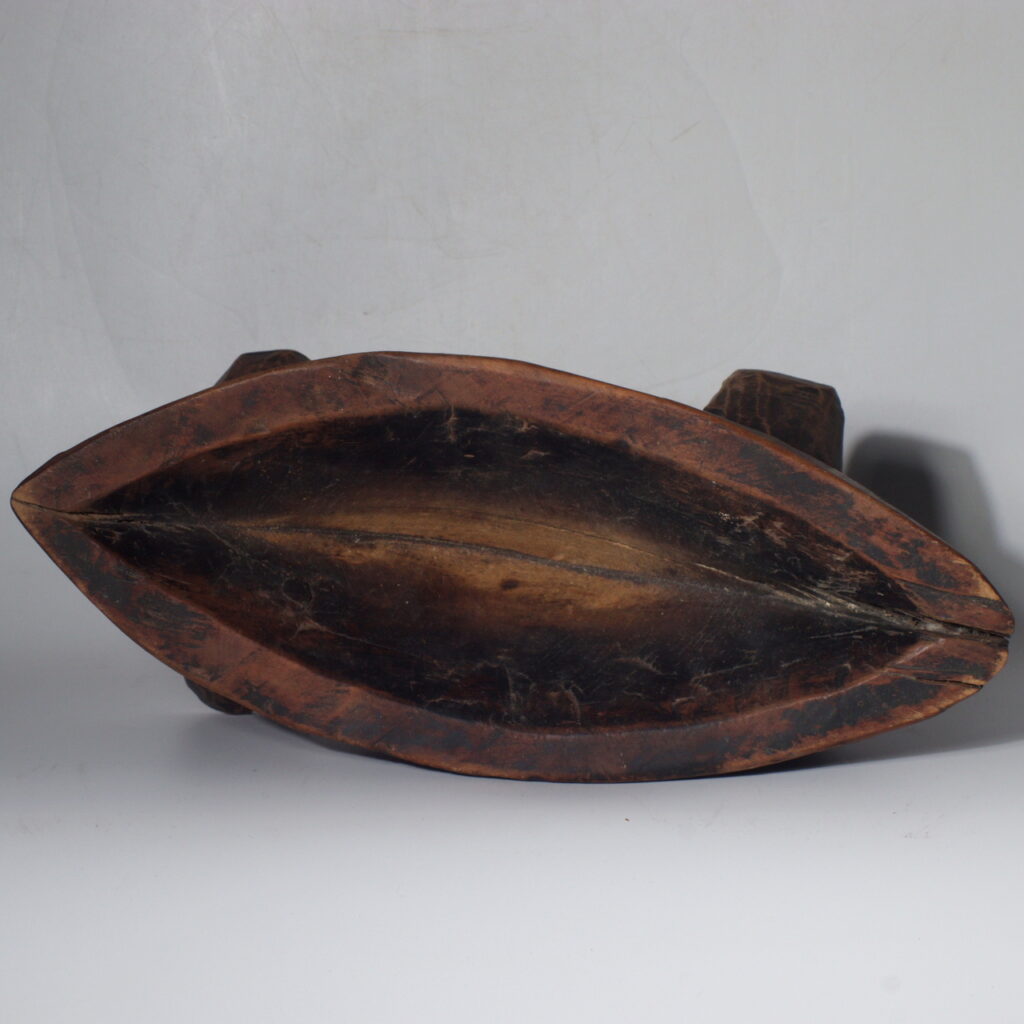
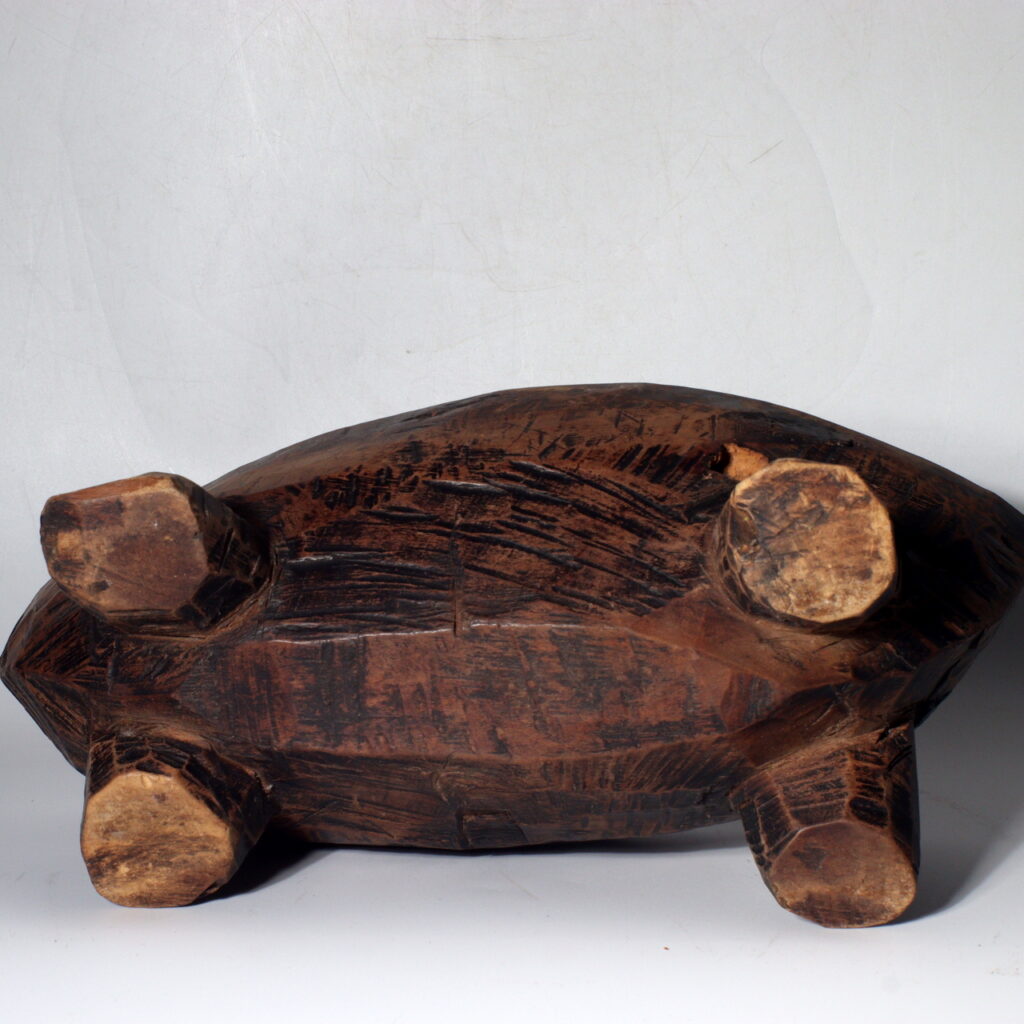

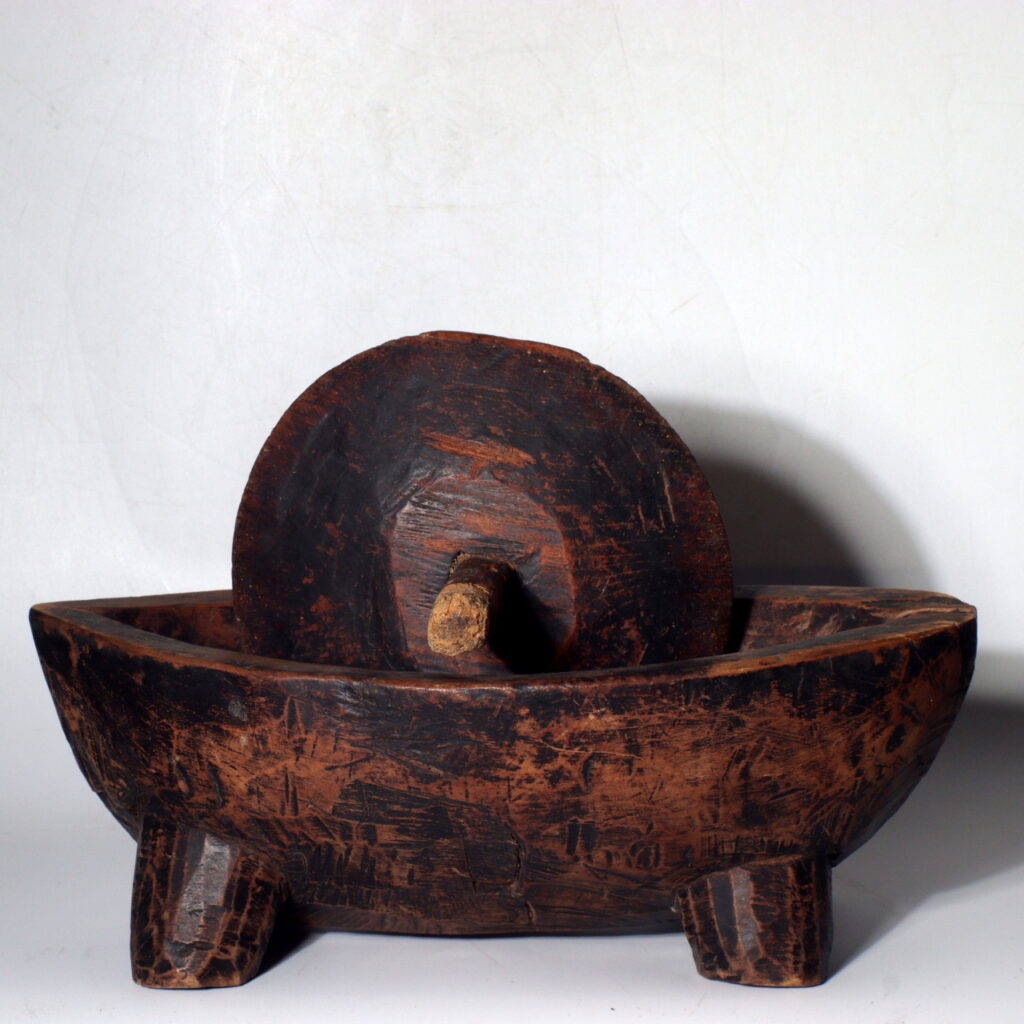
Echoes of Healing: The Art and Tradition of Japanese Herbal Medicine
Among the many Japanese antiques that reflect both artistry and daily life, the Yagen (薬研) stands as a fascinating symbol of traditional medicine and craftsmanship. This wooden medicine grinder, likely from the Meiji period (1868–1912), was used by herbalists and physicians to crush natural ingredients—an instrument that bridges the worlds of healing, spirituality, and design.
The Story Behind This Piece
In the history of Japanese traditional medicine, or Kampo, the Yagen held a central role. Originating from early adaptations of Chinese apothecary tools, it became widely used across Japan by the Edo and Meiji eras. These grinders were employed in the preparation of herbal remedies, combining ingredients such as ginseng, licorice root, and powdered minerals into custom blends for patients.
Unlike the mortar and pestle familiar in the West, the Yagen features a distinctive rolling grinding disc inside a trough-shaped wooden or bronze basin. The user would roll the disc back and forth to finely crush the herbs—a motion that demanded both strength and rhythm. This practice was not merely mechanical; it was almost meditative, symbolizing the healer’s connection to nature and the patient’s journey toward balance and recovery.
During the Meiji era, when Japan began modernizing its medical systems under Western influence, traditional Kampo practices persisted in rural communities. Tools like this Yagen remind us of that transitional moment—where ancient wisdom coexisted with new scientific understanding, creating a uniquely Japanese approach to wellness.
The Beauty and Craftsmanship
This particular wooden Yagen is a striking example of functional folk art. Hand-carved from solid wood, it reveals the maker’s sensitivity to form and balance. The basin rests on four sturdy legs, giving it stability during use, while the grinding wheel and handle—both worn from repeated motion—display a patina of deep browns and soft polish that only time can produce.
The surface bears the traces of countless preparations: subtle scratches, faint indentations, and areas of smooth wear that tell the story of decades of use. These marks, far from diminishing its value, enhance it through the wabi-sabi aesthetic—the beauty of imperfection, impermanence, and authenticity.
In its shape and texture, the Yagen also embodies the spirit of Japanese craftsmanship, where even utilitarian tools were shaped with care and quiet dignity. The craftsman who made this piece would have chosen the wood for durability and tone, ensuring that the material could withstand both moisture and pressure. Over time, the darkened grain and earthy scent would have merged with the herbal aroma of medicinal roots and leaves.
Unlike ornate Chinese apothecary instruments, which often emphasized decoration, Japanese Yagen embody simplicity and restraint, focusing on functionality and spiritual harmony between human and material.
Its Value for Collectors Worldwide
For collectors of Japanese folk art, ethnographic tools, or medical history artifacts, this Yagen holds immense significance:
- Cultural heritage: Represents Japan’s traditional Kampo medicine and the art of natural healing.
- Handcrafted authenticity: Entirely carved from wood, showcasing early Japanese design principles.
- Historical insight: A physical remnant of the Meiji era’s balance between tradition and modernization.
- Aesthetic appeal: A fine example of wabi-sabi—simple, organic, and imbued with time’s quiet dignity.
- Decorative versatility: Its sculptural form and rustic patina make it suitable for display in modern interiors, museums, or collectors’ showcases.
As the global appreciation for sustainable design and cultural storytelling grows, pieces like this antique Yagen are recognized not just as relics, but as living symbols of craft, nature, and healing philosophy.
Conclusion & Product Link
This Japanese antique wooden Yagen is more than a tool—it is a vessel of memory. Each groove and curve speaks of the countless remedies once prepared within it, echoing an age when medicine was handmade, intimate, and rooted in the rhythms of the natural world.
👉 View this item here:
https://koedo-sun-art.com/search?q=Wo&options%5Bprefix%5D=last
If this piece has already found its new home, please explore our other Japanese antique collections here:
🔗 https://koedo-sun-art.com